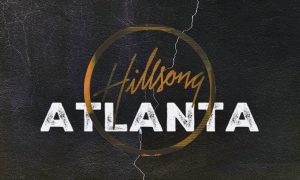Left to my own devices, I NEVER would have seen A Quiet Place. But as the designated plus-one of a friend in the industry, it was my duty to attend the screening premiere, so I did. With great fear and trembling. Horror movies are not my cup of tea. When I went to see Get Out last year, (with great fear and trembling, dragging equally reluctant friends along) I was only doing it for the culture. And I was shocked at how much I enjoyed it. The fear stoking was expected, the thought-provoking was not. But there must be something in the water because the kids these days are Making Horror Movies Great Again. (Says I, with my completely inadequate knowledge of the history of horror movies, but I digress…)
A Quiet Place is a white movie. It is so white that it just touched my hair. The closest we get to a person of color is when John Krasinski’s character tries futilely to reach out to Japan in Morse code. But it’s fine. It makes sense – the whole film is centered on one family and this one family happens to be white. And what is this white family doing? They are trying to survive after earth has been overrun by mysterious and (seemingly) invincible monsters who hunt by sound. In order to stay safe, they need to stay quiet.
Does that remind you of anything? Anyone? Any certain people? No?
It took me a while, too. Mostly because I was annoyed with choices made by the family in the opening scenes. As a family of five (mom, dad, 3 kids) they are out on a post-apocalyptic shopping trip – all barefoot, tiptoeing through emptied streets and deserted stores, communicating with looks and sign language. We quickly figure out that quiet is key, but we don’t know why yet. And it’s not exactly clear how quiet they need to be or how high the stakes, because the youngest of the children is given, what is in my opinion, a nonsensical amount of freedom to run around – grabbing and very nearly knocking a loud toy off a shelf. Then later, when walking home, in a formation that is SO STUPID it can only be ascribed to plot contrivance; the little troublemaker makes a noise that sets off a sequence of events that reveals how very high the stakes actually are. And how imperative their silence is to their survival.
But, I’ll be honest, I initially felt more apathy than empathy for that oblivious little kid, because if he would have just followed what he was told and kept quiet instead of acting like… any normal child would under normal circumstances… wait… do you hear it yet?
If he had just been quiet, if he had just complied…
Alright, this isn’t a quiet place, so I’m going to stop tiptoeing – in their relationship with the thing endangering them, the white people in this movie aren’t seen (the monsters are blind) and are safer the less they’re heard. The white people in this movie live in a reality where reasonable sounds and reactions can result in unreasonable danger and death. The white people in this movie might as well be Black people in America.
It’s the fear of not being able to protect your children from a rather brutal environment.
Emily Blunt (on the underlying theme of A Quiet Place)

A Quiet Place is a white movie. It is so white, that for a moment, I felt white. For a moment, I understood the ambivalence toward victims of America’s monsters. I didn’t blame them for the presence of the monsters, but I did, fault them for not being better at playing by the rules of the monsters. But only for a moment. When there a came a point where we as the audience realized the monster had a weakness, but the white people didn’t know yet I turned to my friend and whispered “They need to hurry up and figure this out.” Because I was invested. I wanted the people to triumph. No one should have to live in constant quiet dread of monsters.
But I’m not convinced White America is truly invested in finding and revealing the weaknesses of our monsters. Their children aren’t the ones in perpetual danger.
Anyway, A Quiet Place is beautifully shot (shout out to upstate New York); with hardly any dialogue the acting is fantastic (everybody does a phenomenal job but Emily Blunt is a BEAST) and a few plot holes/contrivances aside, it’s scarily enjoyable and thoroughly thought-provoking. It invites the viewer to imagine how they’d fare in a world where being heard comes with a high risk of being harmed. And perhaps, taking it a step further, to ponder, who they more actively sympathize with in the real world – the silenced or the monsters?
A Quiet Place is an extremely White movie that is an accidentally accurate parable of Black life. So even if you’re not horror fan, it’s definitely worth seeing. Do it for the culture.





